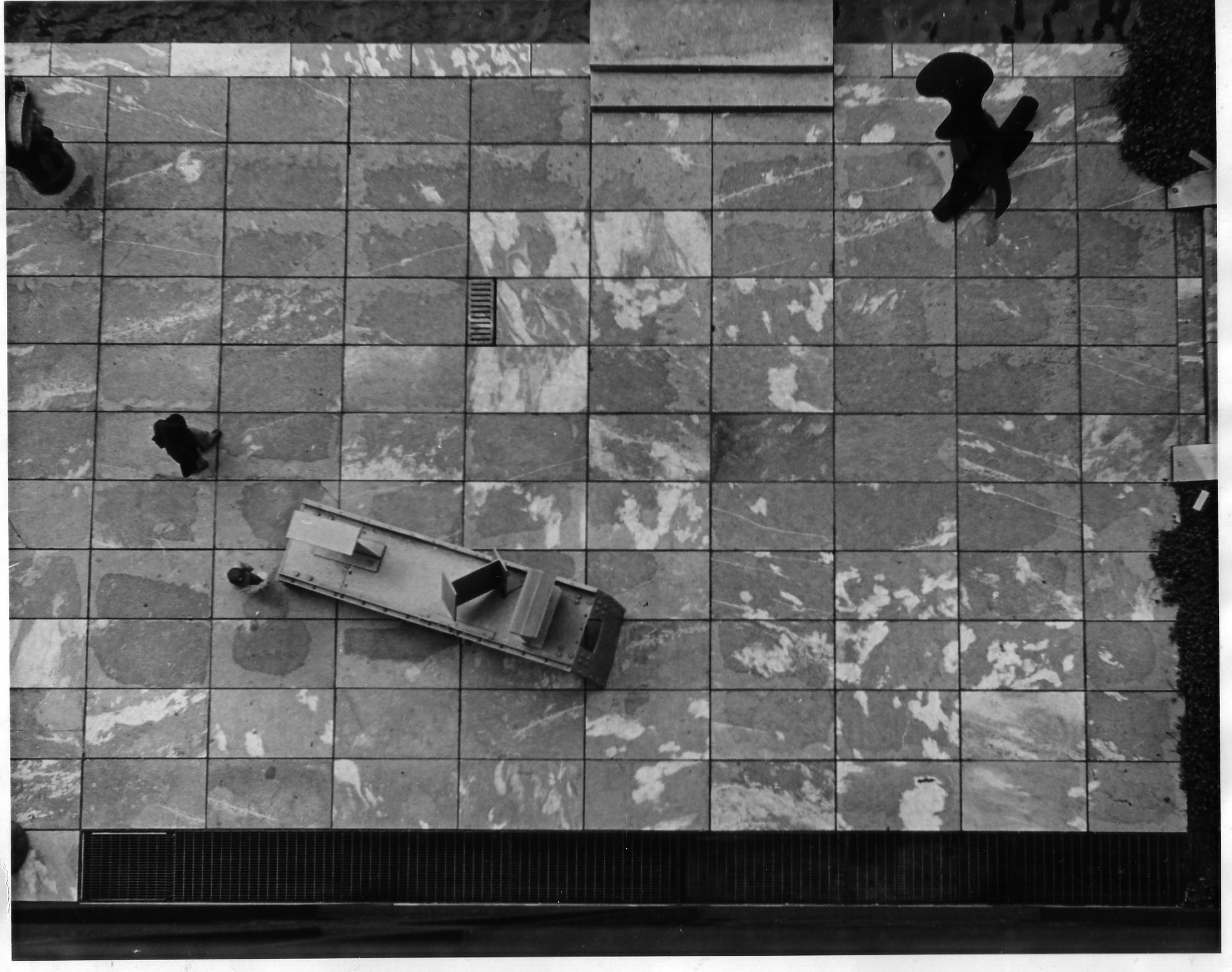1976
(Untitled) MoMa 1976,
Sound Work location: Abby Aldrich Sculpture Garden, Museum of Modern Art, New York City Dimensions: 60 x 20 meters Extant: Summer, 1978
Sound Work location: Abby Aldrich Sculpture Garden, Museum of Modern Art, New York City Dimensions: 60 x 20 meters Extant: Summer, 1978

Image: Postcard by Max Neuhaus, MoMa, view of site.
The work at the PS1 in 1976 [untitled] was created with two high tones at the upper pitch threshold of hearing. If you take a tone and gradually raise it up, at one point it disappears. Just below that point where we can't hear any higher, as sound approaches that threshold, I noticed that the threshold wasn't a line, it was an area. It's an interesting area because, in it, the sound is both there and not there.
With this work for MoMA, I knew from the beginning that I had a way to make very low sounds. There was a ventilation chamber beside the building, and I saw that it could be turned into a subsonic loudspeaker. I built it and started tuning. I just took it down, down and down. It could go down to ten cycles per second; we stop hearing sound as sound at about twenty-five, so this is a full octave and a half below where we stop hearing sound. It was the opposite end of aural perception than the work in the "Rooms" exhibition at PS1 – the lower threshold.
I began trying textures, high and medium, but with this incredible bottom end. I soon noticed that some of the lows were actually resonances of the whole garden, and then one day I came back and I said, what is all this? I've got it right here, this is it, I'll just use the inaudible part. It was a nice moment, saying to myself, turn it around, turn it over.
Max Neuhaus
1987, Germano Celant: r-ngermano-celant-r-nmax-neuhaus-quoted-aural-spaces-1-2-3-in-art-in-america-new-york-october-1987-r-n
1979, Carter Ratcliff: art-in-america-review-of-exhibitions-new-york-january-febbruary-1979-max-neuhaus-at-the-moma-sculpture-garden-and-time-square-by-carter-ratcliff-
2020, Matthieu Saladin: Matthieu Saladin, The Inaudible as an Effect: Tactics of Sound Erasure in Max Neuhaus, 2020